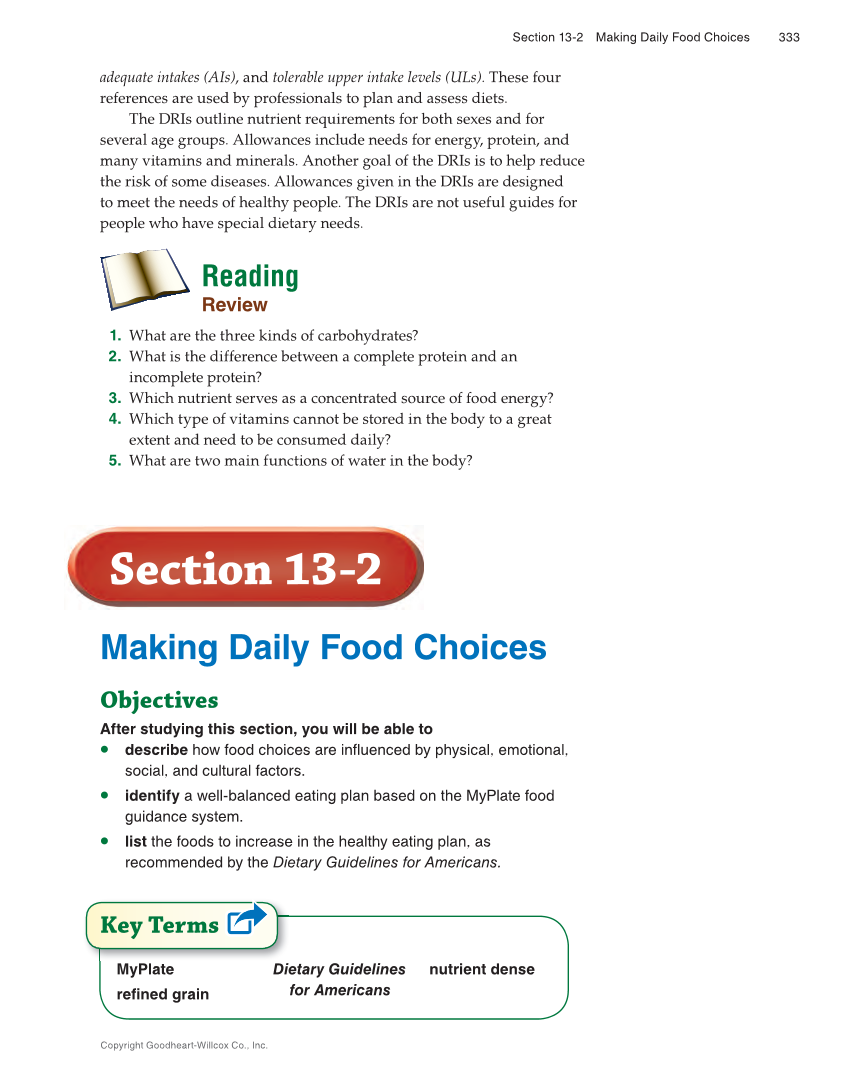Copyright Goodheart-Willcox Co., Inc. Section 13-2 Making Daily Food Choices 333 adequate intakes (AIs), and tolerable upper intake levels (ULs). These four references are used by professionals to plan and assess diets. The DRIs outline nutrient requirements for both sexes and for several age groups. Allowances include needs for energy, protein, and many vitamins and minerals. Another goal of the DRIs is to help reduce the risk of some diseases. Allowances given in the DRIs are designed to meet the needs of healthy people. The DRIs are not useful guides for people who have special dietary needs. Reading Review 1. What are the three kinds of carbohydrates? 2. What is the difference between a complete protein and an incomplete protein? 3. Which nutrient serves as a concentrated source of food energy? 4. Which type of vitamins cannot be stored in the body to a great extent and need to be consumed daily? 5. What are two main functions of water in the body? Section 13-2 MyPlate refined grain Dietary Guidelines for Americans nutrient dense Making Daily Food Choices Objectives After studying this section, you will be able to • describe how food choices are influenced by physical, emotional, social, and cultural factors. • identify a well-balanced eating plan based on the MyPlate food guidance system. • list the foods to increase in the healthy eating plan, as recommended by the Dietary Guidelines for Americans. Key Terms
